The swell saw rogue waves reach up to 9.9 metres off Sydney on Sunday and prompted the Bureau of Meteorology to issue hazardous surf and coastal erosion warnings for the first half of this week.
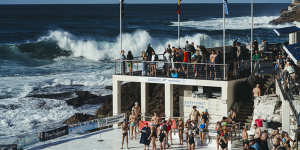
A southerly swell delivers big waves at Bondi Beach on Sunday.Dion Georgopoulos
Beaches facing south-east had the most sand removed,University of NSW erosion researcher Mitchell Harley said,noting last weekend’s weather was the first south-easterly event in a while to hit beaches.
“As soon as you get a bit more of that easterly component it does cause more erosion,” he said.
“We saw about 20 metres of narrowing on beaches,particularly those facing the south-east:Narrabeen,the northern end of North Curl Curl … Maroubra to a certain extent.
“You have waves crashing a lot closer to the coastline than you would otherwise have,which makes the beach more vulnerable to further storm events.
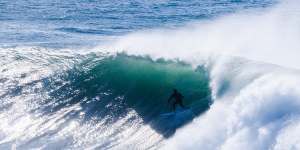
A surfer riding a wave at Dead Man’s,a break near Fairy Bower,Manly,on Tuesday. This break only works during large swells.James Brickwood
“Often you see storms come in clusters and it’s not the first one that causes the damage,but the second or third as they progressively narrow the beach.
Last year,from the back of the beach to the mid-tide mark during what Harley said was the calmest winter on record. “There were almost no southerly swells whatsoever,” he said.
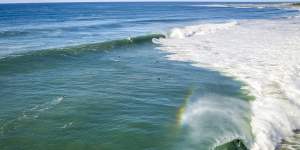
Surfers take on the swell at Skennars Head,north of Ballina,on Tuesday.Danielle Smith
“I haven’t crunched the numbers for this year,but it’s not particularly that much larger or any different to usual winter wave conditions.”
He said Sydney’s,between Tamarama and Bondi,had disappeared again after making a heralded return during the calmer conditions last year.
“This could spell the end of Mackenzies for quite some time,” Harley said.
This week’s swell inflicted minimal damage on most NSW beaches,the Bureau of Meteorology said,because it came more from the south than the east,meaning much of the coast was protected because the swell went across it,rather than towards it.
“The coastline is pretty resilient to swells from that direction,” senior meteorologist Jake Phillips said. “It’s not hitting the shore square on. On the odd occasion when you get swells from the east,the wave height can do a lot more damage in terms of erosion.”
In Wollongong,council workers had the opposite problem,sending excavators on to the rocks at Towradgi Point on Wednesday for the fourth time in 12 months to clear 1800 cubic metres of sand swept into a popular south-facing rock pool.
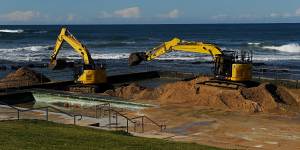
Excavators remove 1800 cubic metres of sand from Towradgi Rock Pool.Kate Geraghty
“On a couple of occasions in the last 12 months it’s been almost completely full - you couldn’t swim in it,” council director of infrastructure and works Paul Tracey said of the sand deposits in Towradgi Rock Pool,which was built on the headland in the 1960s.
“Over the last four to five years,we have seen weather patterns with a higher frequency of extreme events that you wouldn’t normally expect,particularly in the warmer months,including a number of east coast lows that cause quite extensive sand movement along coast,and Towradgi Pool is a low point,so it becomes a sink.”
Tracey said a new environmental plan for clearing the pool would hopefully improve the situation for swimmers,many of whom are regulars.
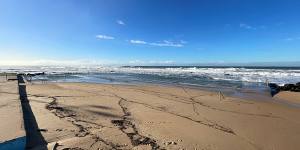
Towradgi Rock Pool filled with sand.Wollongong City Council
“The previous[environmental] approval we had required us to dig the sand out and place it on the southern side of the beach,and obviously the frequent exposure to southerly winds and storms from the south just pushes the sand straight back in.
“If we place it to the northern side of Towradgi Beach,we think that will sort of mimic the natural sand movement around the rock platforms that surround Towradgi Pool,and we hope our swimmers will get more time in the pool with less frequent cleaning.”